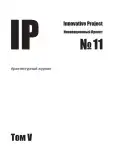Том 5, № 11 (2020)
ИСТОРИИ ГОРОДА
ПРОИСХОЖДЕНИЕ ЧИКАГСКОЙ ШКОЛЫ АРХИТЕКТУРЫ
Аннотация
Описаны последствия пожаров 1866-1872 гг. для архитектуры трёх городов США и первые два года восстановления Чикаго после пожара 1871 г. с дальнейшим перерывом до конца десятилетия. Показаны роль этого перерыва в развитии творчества Дженни, которое привело к возникновению Чикагской школы и работа Джеймса Маклафлина, не получившая развития в Цинциннати. Отмечена роль Питера Уайта в пропаганде идей Виолле-ле-Дюка, ставших основой движения, его влияние на ставших лидерами Бёрнема и Рута. Описано партнёрство Адлера и Салливана, их работы, предвещавшие модерн, контакты Бёрнема и Рута с заказчиками братьями Брукс, повлиявшие на развитие и затем на существование Чикагской школы.
 6-21
6-21


ПРОСТРАНСТВО ГОРОДА
ОСОБЕННОСТИ ВОСПРИЯТИЯ ГОРОДСКОГО ПРОСТРАНСТВА ИСТОРИЧЕСКОГО ЦЕНТРА КРУПНОГО ГОРОДА
Аннотация
Город развивается с течением времени, создавая непрерывный по времени ряд уникальных впечатлений от восприятия городских пространств. Множество средовых параметров влияют на восприятие городской среды, формируют структуры восприятия и его атмосферные особенности. Социокультурное знание о городе, расширяя глоссарий архитектурно-градостроительной теории, занимается исследованием таких параметров городской среды, как временной фактор восприятия, антропологические параметры, ракурс и масштаб визуального восприятия, градостроительные разрывы, что позволяет расширить представление о городе как об уникальном явлении и процессе. Предпринята попытка исследовать структуру восприятия городского пространства центральной части Самары.
 24-29
24-29


ЧЕЛОВЕК И ГОРОД
ЗАБРОШЕННЫЕ ОБЪЕКТЫ. ОТ УТОПИИ К РЕАЛЬНОСТИ: КРИТЕРИИ ЖИЗНЕСПОСОБНОСТИ
Аннотация
В статье рассматривается изменение архитектурной типологии заброшенных объектов в течение времени. Анализируется влияние времени на их градостроительное положение и типологические составляющие - функцию, конструкцию и форму. Заброшенный объект - сооружение, созданное человеком, но не используемое ныне. Они прошли свой путь «от реальности к утопии». Делается попытка разгадать, почему так произошло и возможен ли обратный путь - «от утопии к реальности». В заключение вводятся понятия общие и средовые критерии оценки жизнеспособности заброшенных объектов, и на их основе формулируется понятие архитектурно-типологический потенциал сооружения.
 32-43
32-43


ИССЛЕДОВАНИЕ ДВОРОВОГО ПРОСТРАНСТВА КАК КОНФЛИКТНОЙ ТЕРРИТОРИИ
Аннотация
Рассматриваются аспекты взаимного влияния характера среды и местных сообществ на различных уровнях пространственного освоения. На примере города Самара изучается, каким образом социальный и демографический состав жителей оказывают непосредственное влияние на территориальные отношения внутри района. Приведены основные тенденции и перспективы саморазвития для характерных социально-пространственных единиц города, а также планировочные и административные способы предотвращения территориальных конфликтов. Излагаются необходимые условия для пространственной самоорганизации и формирования жизнеспособных городских сообществ.
 44-53
44-53


ГОРОД В ДВИЖЕНИИ
ПЛАНИРОВАНИЕ СТРУКТУРЫ ГОРОДА ДЛЯ ЕГО УСТОЙЧИВОГО РАЗВИТИЯ
Аннотация
Проблема проектирования архитектурно-планировочной структуры в условиях глобализации и интенсификации роста городов рассматривается в контексте устойчивого развития. В соответствии с положениями ООН-Хабитат планирование городского развития должно соответствовать пяти принципам: компактности, высокой плотности, смешанного использования, разнообразия, неограниченности функционального зонирования территории. Компактное городское развитие является моделью устойчивого развития города, в основе которой лежит синергия трех основных аспектов: социальных, экономических и экологических. В отличие от подхода к зонированию территории модель компактного города уделяет внимание не только развитию смешанного землепользования, но и социальным потребностям в местах приложения труда, досуга, рекреации, а также необходимости экономических ресурсов. Для выявления стратегий проектирования устойчивой архитектурно-планировочной структуры исследуются теоретические подходы в практике городского планирования. Реализация положений ООН-Хабитат направлена на снижение энергопотребления и вредных выбросов, сохранению биоразнообразия, снижению стоимости инфраструктуры и повышению производительности труда, что способствует достижению баланса социальных, экономических и экологических целей устойчивого развития.
 56-62
56-62


ГОРОД ВНЕ ГОРОДА
ЛАНДШАФТНО-РЕКРЕАЦИОННЫЙ КАРКАС ПРИВОКЗАЛЬНЫХ РАЙОНОВ
Аннотация
В статье обозреваются проблемы, с которыми сталкиваются в процессе своего развития привокзальные территории крупнейших городов. Раскрываются такие понятия, как ландшафтно-рекреационный каркас территории его функции, поиск возможных резервов для пространственного развития и улучшения качества экологии среды. Анализируются природные и антропогенные факторы, влияющие на формирование и работу элементов каркаса.
 64-72
64-72


МАСТЕРСКАЯ
МОДЕЛЬ, КАК СПОСОБ КОММУНИКАЦИИ
Аннотация
Статья посвящена общим теоретическим вопросам коммуникаций при восприятии архитектуры. При принятии аксиоматической позиции об адекватности восприятия архитектуры «на месте», т.е. при непосредственном физическом и визуальном контакте субъекта восприятия с архитектурным объектом, авторы ставят вопрос о трансляции этого восприятия другому субъекту не имеющего возможности прямого восприятия посредством деконструкции полученного образа, формирования на этой основе модели, как объекта трансляции. Воспринимающий субъект, т.е. «субъект два» в свою очередь дешифрует модель и на ее основе путем экстраполяции формирует новый образ, гомогенный первичному впечатлению в случае успешной трансляции. Статья описывает нюансы и сложности такого процесса.
 74-80
74-80


КОНТРОЛЬ ДОСТУПА В СЛОЖНЫХ ПЛАНИРОВОЧНЫХ СТРУКТУРАХ
Аннотация
Статья сосредоточена на изучении комплексных полицентричных планировочных структур, наиболее характерных для крупных многофункциональных зданий. Изучается вопрос объемно-пространственной типологии многофункциональных общественных зданий, кратко рассматриваются различные планировочные принципы ограничения доступа. Планировочная система может быть открытой во внешнюю городскую среду, т.е. экстровертированной, и закрытой, опирающейся на внутренний контроль, т.е. интровертированной, а также складываться как традиционная система преград. Автором описывается связь защиты и проницаемости пространств, в том числе визуальной и физической. Исследуется вопрос обеспечения безопасности и контроля доступа в подобных мегаструктурах, делается вывод о том, что их объемно-планировочная организация строится как система преград, разделяющих пространства здания на разные уровни доступа, что обеспечивается коммуникационным каркасом.
 81-87
81-87


КОРОТКО
ОБ АРХИТЕКТУРЕ КАК О НАСУЩНОМ
Аннотация
 90-92
90-92











